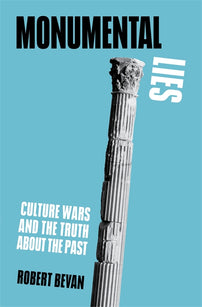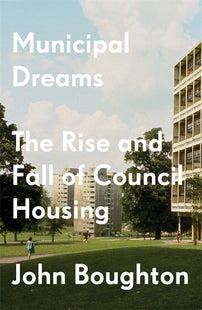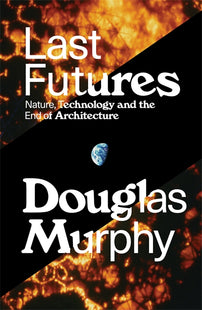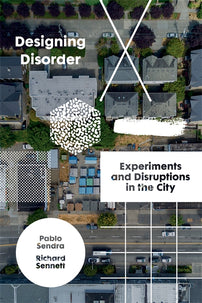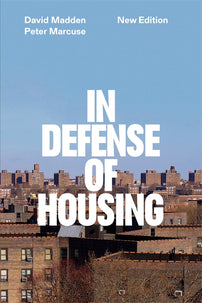DYSTOPIAN ON TRIAL: ALICE COLEMAN'S ARCHITECTURAL DETERMINISM
Marking the death of Margaret Thatcher’s favourite urbanist, Alice Coleman, Robert Bevan, the author of Monumental Lies, explores her legacy and shows how her argument on the negative powers of design persist.

The renowned geographer, Alice Coleman, died this May, aged 99, but her work still exerts a pernicious influence today. It is part of a long thread of determinism in architecture that draws a simplistic line between cause and effect which should worry those interested in social justice in the public realm. Her 1985 book Utopia on Trial aimed to eviscerate modernist housing estates, blaming their design failures for crime and anti-social behaviour. No surprise then that she was among Margaret Thatcher’s favourite academics.
Her study used indicators such as litter, graffiti, dog shit, and the number of children taken into care to ‘prove’ that modernist housing blocks were at fault. She gave precise figures for how many storeys or front doors on communal landings would trigger problems. High-level walkways were a particular sin. Why Coleman’s preferred model of the traditional house in a garden suburb could suffer as many problems as an inner-city estate, especially when on a destitute city fringe, was never explained. Nor why the design similarities between London’s upmarket Barbican and failing public estates did not lead to the same criminal outcomes.
For Coleman, the problem was not poverty or allocations policies or maintenance but that the ‘age-old system of natural selection’ had been disrupted by the ‘Utopian ideal of housing planned by a paternalistic authority’. The problem, then, was not just Modernist design per se but state interference in the workings of the free-market. Unsurprisingly, her work fitted perfectly into Thatcher’s policy of housing privatisation under the Right-to-Buy that has proved catastrophic for the supply of affordable housing.
The shortcomings of Coleman’s study – such as the lack of a comparative index of socio-economic deprivation to compare to her design variables – were roundly critiqued at the time. Yet, her thinking found its way into a £50 million government-funded estate remodeling experiment. Local police challenged her claims that design changes following her method on Westminster’s Mozart Estate had caused a drop in crime (rather than a change in policing tactics at the time), yet her approach survives in the present Secured by Design regime under which the police still interfere in design matters, such as housing estate layout.
[book-strip index="1"]
Coleman’s work, as the critic Owen Hatherley points out, was a ‘Hobbesian, paranoid vision’. It was heavily informed by Oscar Newman’s politically-charged ‘defensible space’ theory of the early ‘70s that gained new prominence under Neoliberalism. Newman did not believe that mixed social groups worked well and suggested cities should be re-designed into fortress-like enclaves segregated by income, class and ethnicity. These were theoretical and, in practice, physical measures against the pluralist and cosmopolitan city piloted on public housing estates in places such as Dayton, Ohio where a series of highly-controlled, gated cul-de-sacs with only one policed entrance were created. There is no empirical evidence to support Newman’s theories; most serious scholarship suggests that secluded cul-de-sacs do not prevent crime and that this is better achieved by traditional street grids.
The term ‘architectural determinism’ was coined by Maurice Broady, who was concerned about its authoritarian role, in 1966. As a practice it has its origins in projects such as Jeremy Bentham’s Panopticon prison where prisoners did not know if they were being watched from a central observation point and adjusted their behaviour accordingly. It continued through Bauhaus ideas of designing a new society into being and through Winston Churchill’s simplistic dictum that we first shape our buildings and then they shape us. We cannot, for example, blame the Classical style for reaction or Fascism (although it can be put to that use) any more than Modernism for failed utopian socialism. This determinist wrong-headedness was boosted with the post-war rise of the behavioural sciences with, for example, rat overcrowding experiments correlated to urban densities.
In the United States, Newman’s theories also informed the fake science of ‘broken window theory’ first propagated by James Wilson and George Kelling in a 1982 article in The Atlantic and then put into practice by the NYPD and Mayor Rudy Giuliani as ‘zero tolerance’ policing. The argument was that not dealing immediately with low-level problems such as graffiti, public drinking and vandalism, led to a spiral of decay and serious crime – i.e. don’t fix one broken window and a thousand more broken windows will soon follow. Linked to racial profiling, stop and search, and discrimination against the homeless and sexual minorities, the theory has been comprehensively refuted including by empirically-based studies that have looked at other factors in falling street crime such as changes to age demographics, drugs epidemics, and unemployment rates. Major crime was falling in American cities that had never used broken windows policing.
To support their position, Wilson and Kelling used a 1969 experiment by psychologist Philp Zimbardo (of the infamously skewed Stanford Prison Experiment) in which Zimbardo abandoned two cars – one in the Bronx, one in well-heeled Palo Alto, California. The car in the Bronx was swiftly broken into and wrecked while the second stood unmolested. Wilson and Kelling made a prediction of the future of the area around the Bronx car rapidly changing into 'an inhospitable and frightening jungle'.
[book-strip index="2"]
The academic Bench Ansfield is not alone in pointing out that the Zimbardo experiment – and Wilson and Kelling’s use of it – reinforced racialised conceptions and fears of the Bronx and the idea of the ghetto. Scholar and activist Dorothy Roberts has similarly argued that, in practice, ‘Broken Window’-derived policing policies criminalised poor communities of colour. Applied at the discretion of a racist force, it leads to deaths such as the NYPD killing of Eric Garner who was arrested for selling single cigarettes on the street.
In the 21st century, biologically-based architectural determinism has taken on fresh forms informed by neuroscience, evolutionary biology and genetics and similarly founded on little evidence. Welcome to Your World: How the Built Environment Shapes Our Lives by Sarah Williams Goldhagen, for example, claims that place-based ‘embodied cognition’ can nudge us to think or behave in particular ways. Certainly, Goldhagen is right when she says that people live in bodies and bodies live in space but this leads to claims such as buildings without surface-based cues (i.e. un-ornamented Modernism) are not ‘sticky’ enough to engage the body’s sensory and motor system which in turn impoverishes us. She also argues that the design of a school can account for up to a quarter of a child’s rate of learning. A quarter! This simply cannot be true in any empirically measurable or direct cause-and-effect way.
Throughout the last century, determinism turned many architectural professionals into elitist technocrats wedded to top-down attempts at reformism. Le Corbusier thought that appropriate architecture could stop revolutions happening while the Bolshevik Constructivist Aleksei Gan believed that architecture should not simply reflect evolving society but should be an active instrument for revolutionary change. Both were guilty of substituting technocratic decisions for mass political action.
Architects continue to talk of their designs creating communities when they can do no such thing; they can only use design to create the conditions in which communities might more readily emerge or make design-decisions which would hinder the emergence of communities (such as dividing walls and segregation). In the final analysis, communities are created by people and their interactions rather than structures. Determinism invests too much agency, too much belief in the power of our environment to produce good or ill. And when we give too much agency to designed objects, we diminish ourselves as the crucial political actors in any situation. It is we that change our environment rather than it directing us.
If anything, though, the idea of ‘beauty’ being pushed by arch traditionalists from Sir Roger Scruton onwards is a sign that determinism is once more getting a grip on public policy. No real surprise, then, that Scruton’s acolyte Nicholas Boys Smith, now the conservative head of the UK government’s Office for Place is a Coleman fan. In 2014, he and James Wildblood, a fellow member of the traditionalist urbanism agency Create Streets, published a warm interview with Alice Coleman firmly endorsing her views.
[book-strip index="3"]
This is not to say that design has no influence at all on place – that would be ludicrous. For example, it has been accepted by urban designers for many decades that perimeter city blocks with activated public fronts and private backs that concentrate pedestrian flows, instead of a more abstracted layout, tend to function better and make cities feel safer. All things being equal, that is – which they never are. (Boys Smith is now claiming that Create Streets have proved Jane Jacobs’ 1960s observations on the subject.)
We should always be suspicious of easy cause and effect analysis. In later life Alice Coleman took up the pseudo-science of graphology which infers character from handwriting, even becoming editor of the Graphological Magazine. This should tell you all you need to know about the credibility of her ideologically driven determinist theories.
